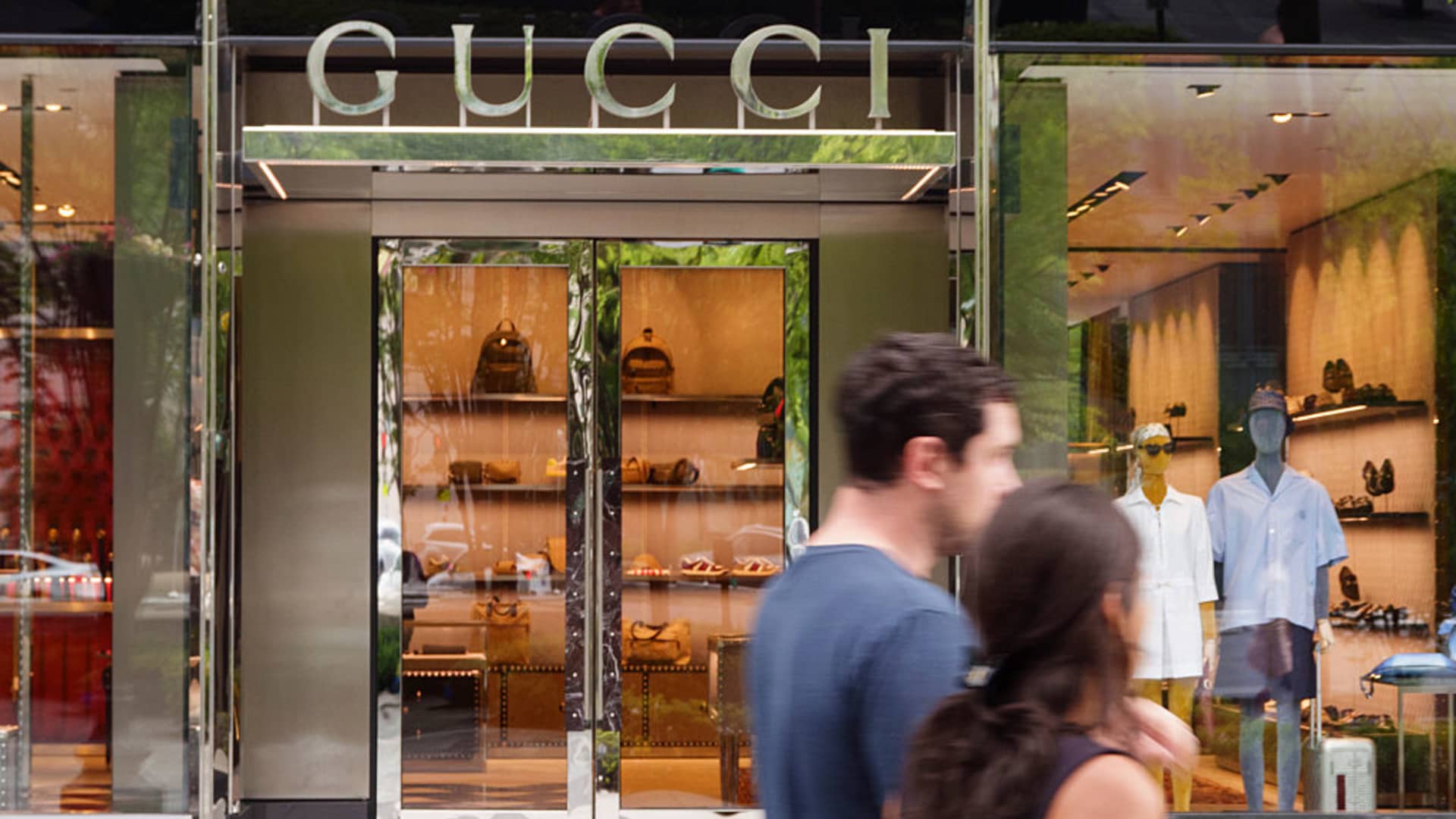The Gucci Predicament: A Deep Dive into Kering’s Tumultuous Times
The luxury fashion industry, often romanticized for its opulence and timeless appeal, is not immune to the harsh realities of market dynamics. Kering, the French luxury conglomerate behind iconic brands like Gucci and Saint Laurent, is currently grappling with a significant downturn, particularly in its flagship brand, Gucci. The recent 25% sales decline in the second quarter of 2025 has sent shockwaves through the industry, prompting a closer examination of the underlying causes and potential solutions.
The Weight of Gucci: A Brand in Crisis
Gucci’s performance is pivotal to Kering’s financial health, contributing nearly half of the group’s total revenue. The 25% sales drop in Q2 2025 translates to a staggering €1.46 billion loss, a figure that underscores the severity of the situation. This decline is not an isolated incident but part of a broader trend, with double-digit sales decreases recorded in every quarter of the previous year. The luxury sector’s overall weaker demand exacerbates the challenge, making the competitive landscape even more daunting.
Unpacking the Reasons Behind the Decline
Shifting Consumer Preferences: A Change in Taste
The fashion industry is notoriously volatile, with consumer preferences evolving rapidly. Gucci’s previous creative direction, characterized by bold, maximalist designs and a strong connection to streetwear culture, once drove immense popularity. However, there are signs that this aesthetic may be losing its appeal. The current trend leans towards understated, classic luxury, potentially leaving Gucci’s flamboyant style out of step with contemporary tastes.
Brand Fatigue: The Risk of Overexposure
Gucci’s widespread popularity may have inadvertently contributed to its current predicament. The brand’s logo became ubiquitous, appearing on everything from handbags to t-shirts. While this visibility initially fueled growth, it also risked diluting the brand’s exclusivity and desirability. High-end luxury consumers often seek items that are both stylish and distinctive, offering a sense of individuality. Overexposure can diminish this exclusivity, leading customers to explore alternative brands that offer a more unique and personalized experience.
Geopolitical Uncertainty: A Global Impact
The luxury market is heavily influenced by global economic and political factors. Ongoing geopolitical tensions, economic uncertainty in key markets, and fluctuations in currency exchange rates can significantly impact consumer spending. Kering has identified geopolitical uncertainty as a contributing factor to its recent struggles. Instability in regions like the Asia Pacific, a crucial market for luxury goods, can lead to decreased tourism and reduced consumer confidence, ultimately affecting sales.
Internal Transitions: Navigating Change
Kering is currently undergoing significant internal transitions, with Luca de Meo recently appointed as the new CEO. Additionally, Gucci is experiencing its second design revamp in just three years, signaling a potential shift in creative direction. While these changes aim to revitalize the brand and address current challenges, they also introduce uncertainty. Any period of transition can create instability and impact team morale, potentially affecting the design process and overall brand strategy.
Kering’s Response: A Strategy for Revival
Creative Reimagining: A New Design Direction
The appointment of a new creative director is a crucial step in redefining Gucci’s aesthetic and re-engaging consumers. This involves introducing fresh designs and carefully curating the brand’s image and messaging to align with evolving consumer preferences. The goal is to balance honoring Gucci’s heritage with embracing a modern, relevant sensibility. The success of this endeavor will depend on the new creative director’s ability to capture the zeitgeist and create designs that resonate with both existing and new customers.
Strategic Repositioning: Recapturing Exclusivity
Kering is likely to focus on repositioning Gucci to regain its sense of exclusivity and desirability. This could involve reducing the ubiquity of the brand’s logo, emphasizing craftsmanship and quality, and introducing limited-edition collections. By creating a perception of scarcity and exclusivity, Gucci can appeal to consumers seeking unique and highly coveted items.
Market Diversification: Expanding Horizons
Given the geopolitical uncertainties and fluctuating economic conditions in certain regions, Kering may explore opportunities to diversify its market presence. This could involve expanding into new and emerging markets and strengthening its presence in regions that have demonstrated resilience in the face of economic headwinds. By diversifying its geographic footprint, Kering can mitigate the risks associated with relying too heavily on any single market.
Operational Efficiencies: Streamlining for Success
In addition to its creative and strategic initiatives, Kering is likely to focus on improving operational efficiencies across its various brands. This could involve streamlining supply chains, optimizing inventory management, and leveraging technology to enhance the customer experience. By improving its operational performance, Kering can reduce costs, improve profitability, and free up resources to invest in strategic growth initiatives.
Conclusion: Navigating the Future
The challenges facing Kering and Gucci are significant but not insurmountable. The luxury market is inherently cyclical, and brands that can adapt to changing consumer preferences and economic conditions are best positioned for long-term success. Kering’s strategic overhaul, coupled with a renewed focus on creativity, exclusivity, and operational efficiency, offers a pathway towards revitalizing Gucci and restoring the group’s financial health. The road ahead may be bumpy, but with strong leadership, a clear vision, and a commitment to innovation, Kering can navigate these turbulent times and emerge stronger than before. The world of luxury fashion will be watching closely to see if the company succeeds in its endeavors.











